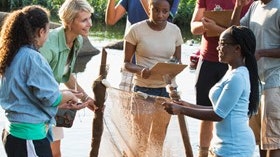Homepage
•
Learning Library
•
Blog
•
Turn students into real-world science collaborators
Expand breadcrumbs
Expand breadcrumbs
- Learning Library
- Blog
- Turn students into real-world science collaborators
- Homepage
- •
- Learning Library
- •
- Blog
- •
- Turn students into real-world science collaborators
Turn students into real-world science collaborators
By Nicole Krueger
February 15, 2018








